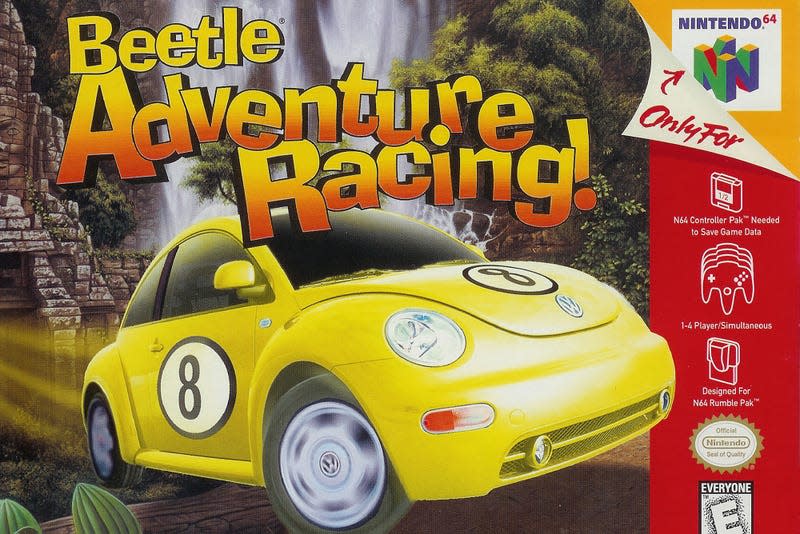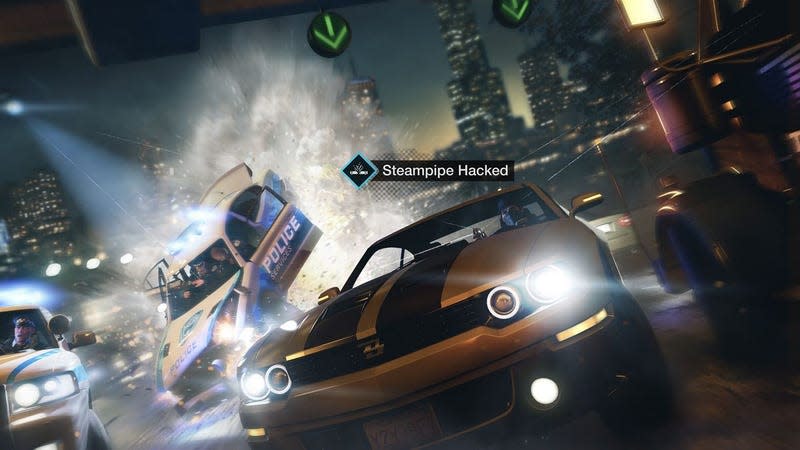These Racing And Driving Games Did Not End Up As Planned

Making games is hard. Even racing games, though seemingly simple in concept, carry their own unique challenges. How should the cars handle? Should the environment be linear, or an open-world? Should there be a narrative and, if so, how should it play out? And that’s all before you get to the universal game dev headaches of corporate pressure and time constraints.
For one reason or another, the following 10 driving and racing games changed significantly through the course of development. Some switched themes, others entire genres. Some emerged better for these course corrections and became monumental hits. Others less so — and others still, we’ll never truly know. Let’s take a trip down memory lane and reminisce on these racing games that were and almost were.
Read more
Beetle Adventure Racing

Paradigm Entertainment’s Beetle Adventure Racing for the Nintendo 64 was far better than it had any right to be, particularly if you expected a cash-grab promotional tie-in for VW’s New Beetle. Yet it began life as an entirely different pitch, when Electronic Arts enlisted Paradigm to develop a Need For Speed entry specifically for the N64. Next Generation magazine confirmed this back in the day, and some proof even made it to the final product via “NEED FOR SPEED” text lurking in the game’s debug menu. They re-cast around Volkswagen’s quirky compact (or Holden’s Aussie muscle, depending on where you’re reading this) didn’t occur until midway through the project. While it’s fun to think about how an NFS taking advantage of Nintendo’s 64-bit machine could’ve turned out, Beetle Adventure Racing is so uniquely charming that I reckon we didn’t miss much in the end.
Blur

After Activision swept Project Gotham Racing devs Bizarre Creations from under Microsoft’s wing in 2007, the publisher issued the Liverpool-based team a formidable, some would say downright impossible task: “to do for racing what Call of Duty did for shooters.” Blur, a Mario Kart-like, weapons-based arcade racer with real cars and a real-ish handling model, was the game entrusted to achieve it. Lead designer Gareth Wilson introduced Blur with a narrative component that was ultimately ditched before release, in favor of expanding “social features,” per an GameSpot interview from 2010. While the final product was indeed a blast — particularly over a split-screen session with three friends — Blur’s success was entirely dependent on the cultivation of a thriving, competitive online multiplayer community that never showed up.
Wave Race 64
Credit: Unseen64 via YouTube
Before Wave Race 64 became a game about racing jet skis, it was a game about racing futuristic, transforming speedboats best compared to something out of Midway’s Hydro Thunder. The admittedly blurry video above was captured at Nintendo’s Shoshinkai trade show in 1995, more than six months before the N64's Japanese launch. While the final version allowed players to race against three competitors, this earlier clip shows races of five, perhaps possible due to the (mostly) static watercraft being less intensive to render and animate than a rider and jet ski together. Rare’s Tim Stamper is credited with suggesting producer Shigeru Miyamoto and the Nintendo EAD team switch the focus from boats to personal watercraft. Those who have played and loved Wave Race 64 over the years would likely agree: it was the right call.
Watch Dogs

Ubisoft’s Watch Dogs series — basically Grand Theft Auto but in a dystopian future with a bent toward hacking and cyberterrorism — isn’t a driving game, strictly speaking. But it came out of one, namely a cancelled project for one of the French publisher’s other properties: Driver. This was suspected by many fans but never properly confirmed until 2021, in an illuminating piece by VG247 quoting Ubisoft devs:
Driver: San Francisco launched in 2011 to glowing reviews, but lacklustre sales. According to a former senior Ubisoft employee, it was the death knell for the series, “definitely the end of the road for that franchise”.
The same source says that Ubisoft Montreal’s Driver demo was rejigged in response, refocusing on its hacker fantasy: “They just did their own thing and convinced Yves [Guillemot, Ubisoft CEO] he could have ‘his own GTA’ instead of the low selling Driver.”
The source at Ubisoft disputes the timing, suggesting that Ubisoft Montreal’s Driver game had already morphed into Watch Dogs before San Francisco came out. But they agree that hacking was the aspect that pushed the project into new series territory: “It took it too far from anything that felt like Driver. They couldn’t make the concept fit with the franchise.”
If you’ve played Driver: San Francisco before, it’s hard not to be wistful about that series dying so Watch Dogs could live. Name another game where you can teleport from car to car in an open world, and those cars include the Dodge Neon, Cadillac DTS and Oldsmobile Vista Cruiser. Yeah, that’s what I thought.
Gran Turismo HD Concept/Gran Turismo 5 Prologue
Credit: IGN via YouTube
The year is 2005. Polyphony Digital is coming off Gran Turismo 4, one of the greatest racing games ever made. All it really needs to do is focus its efforts on making Gran Turismo 5 as good as it can be, taking advantage of the capabilities of the much-hyped PlayStation 3, which has still yet to come out. Unfortunately, Polyphony and its chief Kazunori Yamauchi were determined to do literally anything but that in 2005, leading to the confusing announcement and prompt cancellation of Gran Turismo HD — a product that, almost 20 years on, I’m still not entirely sure I understand. GTHD was really two games, and here’s how IGN explained them at the time:
In GTHD Premium, players get to sample a portion of Gran Turismo 5, with two brand new courses and 30 cars that fully make use of the PS3's capabilities. This mode will offer arcade-style races, but it continues the spirit of the series by serving as a “pure driving simulator.” Premium mode will not have any elements of the Series Gran Turismo mode, where you earn new cars and courses by clearing events. All cars and courses will be available from the start. [...]
The second mode of play is GTHD Classic, an online racing mode that’s based off both the Gran Turismo HD demo from E3 and the PlayStation 2 beta test that Polyphony conducted a few months back in Japan. [...] In Classic mode, players begin with no cars or courses. New rides and tracks are added via downloads with over 750 cars and 50 courses to choose from. SCE will charge for the downloadable extras, and while pricing hasn’t been finalized, we expect each car to cost between 50 and 100 yen (50 cents to 1 dollar) each. Polyphony plans on adding more cars and courses on a weekly or monthly basis, with some cars available in limited quantities.
So, to sum up, GTHD “Premium” was more or less the free demo released as Gran Turismo HD Concept in 2006. Except not really, because Concept only had one track and far fewer than 30 cars. Also, GTHD “Classic” — seemingly a cut-down version of Gran Turismo 4 Online Test Version with no conventional single-player campaign, loads of microtransactions, more competitors in races and even a few bikes from Tourist Trophy — simply never came out. Both were scrapped in favor of Gran Turismo 5 Prologue, which finally launched with online play globally in 2008.

 Yahoo Autos
Yahoo Autos 